RPGamer’s Favourite Final Fantasy Foes

The Final Fantasy series celebrates 35 years since the original Japanese launch of Final Fantasy on the Famicom in Japan in 1987. Since then, it has provided fifteen mainline entries, with a sixteenth coming in June, as well as a wide variety of spin-offs, sequels, prequels, ports, remasters, and remakes. The series has been one of the pillars of the RPG genre, as well as RPGamer itself.
To help mark the occasion, we have decided to do a pair of features celebrating some of our favourite figures in the series. Going all out on the alliteration, we are celebrating some of the series’ best characters — be they allies or enemies — by looking at our favourite Final Fantasy friends and our favourite Final Fantasy foes. In our foes edition, we have invited the RPGamer staff to select some of their favourite antagonists, be they main villains, recurring troublemakers, or single appearances that massively change the course of the story, and explain what makes them so memorable. As many of these characters play major roles in their game’s plots, often towards the end, readers should expect some major spoilers of certain entries.
Ardyn Izunia
(Final Fantasy XV)
Throughout most of Final Fantasy XV, Ardyn is more of the cunning strategist rather than the beat-em-up boss type. However, by the point in the game players get to fight him for real, you’re so emotionally angry at the guy that I feel like it really adds to the gameplay. Not only is he a boss you must beat, but now as a player, you really want to kick his butt for your own reasons.
We’re introduced to him as the Chancellor of Niflheim, and the right-hand man of the Emperor, handling the political side of things. Not only is he really good looking, he has a casual witty aura and remains unfazed about the events around him. He’s that guy who is super patronizing all the time, and you can’t do anything about it because of his rank. Call him a sinister behind-the-scenes puppetmaster, if you will.
As much as I ended up hating the guy (and then later feeling very conflicted), his character development was real top-notch for being a final boss. He acts polite and helps the team along the way, but also manipulative. The way he messes with the gang is humorous, and even though it’s pretty clear he’s a bad guy, I really hoped he wasn’t. Ardyn is a different kind of antagonist that to most of the other ones I’ve ever come across, and that’s why he’s one of my favorite antagonists in Final Fantasy. — Sarah McGarr
Argath Thadalfus
(Final Fantasy Tactics)
Sometimes, villains are layered and charismatic, leading players to potentially see them as heroes in another story. Other characters are like Argath from Final Fantasy Tactics, one of the best examples I can think of for a truly hated character. Someone whose sole purpose in the story is to get under everybody’s skin and do things that aren’t cool, interesting, or powerful, embodying a true villain.
Argath is not only a villain in the plot, but also a pretty frustrating guest character for a few story battles. He’ll run off and get himself killed, leading to potential game overs, or at the very least steal experience points. All of this comes while tossing out view points oppossing the protagonists simply to be a general nuisance. Then, after finally ridding ourselves of the pest, he returns as a major catalyst bringing war to Ivalice and altering the lives of many people without realizing it. Argath is a true thorn in the side of good and is the rare kind of villain who is not remembered fondly or considered cool, just a straight up bad guy. — Ryan Costa
Emet-Selch
(Final Fantasy XIV)
Although the Ascians have been a known threat since A Realm Reborn, it’s not until Emet-Selch arrives on the scene that we truly get to understand their motivations and connection to the other great foes in the Garlean Empire. Initially lurking elsewhere, he makes his grand appearances at end of Stormblood and in the lead up to Shadowbringers, whereby he quickly establishes his position at the front of the Garlean Empire and the power he wields.
Emet-Selch initially draws attention thanks to his flair, not just in his appearance but his actions. The Ascians have never been afraid of hamming things up, but Emet-Selch takes it another level. Be it through the snap of his fingers when he casts magic, or the gleeful way he can taunt his allies and foes alike, he exudes a sense for the dramatic.
While Emet-Selch delights in playing the villain, there’s a clear wariness that becomes obvious as Shadowbringers goes on. This becomes clear as he decides to accompany players throughout the expansion, hoping that learning about the past will ultimately see them joining him. Shadowbringers does a magnicifient job of detailing his fall, from someone who needed to take the most drastic actions to restore what was lost, causing untold destuction in his wake. His story is ultimately one of enormous tragedy that arguably puts him closer to players as they learn the lengths he is willing to go to do what he thinks is necessary. — Alex Fuller
Gilgamesh
(Final Fantasy V)
Gilgamesh is a recurring character in the Final Fantasy series who has shown up as an ally, an optional boss, a summon, or some combination of the three. His first appearance, though, is as an antagonist, the right-hand man and commander of the army of the big bad Exdeath. For being in such an important role, Gilgamesh is not all that competent, or really all that evil. While he follows Exdeath’s orders, he’s mainly preoccupied with finding powerful weapons to add to his collection and being a strong fighter. However, he is ineffective at both of these things. He mistakes the suspiciously named Excalipoor for the legendary Excalibur and is unpleasantly surprised when the sword does nothing to his opponents. In addition, while Gilgamesh is supposed to be a powerful challenger, his overconfidence leads to him losing his battles with the Warriors of Light. He tries to save his reputation by fleeing when the fights get tough, but he just comes off as a coward. Eventually, Exdeath gets tired of his incompetence and banishes him to the Interdimensional Rift.
While Gilgamesh may not be a successful villain, he is a very amusing and ultimately likable antagonist. He has a sense of honor and while he hates losing, he comes to see the Warriors of Light, particularly Bartz, as worthy rivals. He becomes friendlier to the party and even helps them in the Rift if they fight the optional boss Necrophobe. Gilgamesh’s dialogue is a delight to read, at least in the Game Boy Advance version. He’s a big ham with big boasts. Who can forget his iconic line “Enough expository banter! Now we fight like men! And ladies! And ladies who dress like men! For Gilgamesh… it is morphing time!” While Gilgamesh seemingly perishes after taking down Necrophobe, he may still be traveling through the Interdimensional Rift to pop up in other Final Fantasy games, taking with him his love of collecting weapons, possibly a friend named Enkidu, and his fantastic boss theme, “Battle on the Big Bridge”. — Cassandra Ramos
Jecht
(Final Fantasy X)
Jecht or — as he prefers to be called — The Great Jecht is one of the main antagonists in Final Fantasy X. He has an interesting duality since he incarnates both a hero and a foe. Moreover, he is father to protagonist Tidus, showing a bully behavior that usually encourages Tidus to carry on. He walked the same path that his son is traversing during the game, but he had to make a big sacrifice in order to be triumphant, so he secretly wants his son to be better than him and end his misery.
Before being teleported to Spira, he was an arrogant blitzball star in Zanarkand who used to torment his son, and he continues to haunt Tidus both in his dreams and in reality during the whole game. Besides his muscular human body, he has an imposing Aeon form which players fight against late in the game. Both what he represents after turning into Sin and his whole relationship with Tidus make him a foe players love to hate. — Luis Mauricio
Kefka Palazzo
(Final Fantasy VI)
For the first five games in the Final Fantasy series, many of the villains either stood in the background or lacked any sort of personality. Then Final Fantasy VI came along and gave us a villain so unforgettable that players can still hear that laugh the second he gets brought up, and are likely humming his theme as they read this. That is the legacy of Kefka, the Joker of the Final Fantasy series.
In other Final Fantasy games, players witness the aftermath of a villain’s evil. Final Fantasy VI puts Kefka’s worst traits in the forefront. Players witness the horror of him poisoning the water in Doma, learning that Kefka will do anything to get what he wants. Then, during the siege of the esper world, he murders several espers in cold blood to gain their powers. If that wasn’t enough, he strikes down General Leo without a second thought, and zaps Emperor Gestahl with a lightning bolt to show who the real villain has been the whole time.
The key thing that makes Kefka so memorable however, is the fact that he actually wins. He ultimately ends up as a god that rules over a wasteland of oppressed people. The entire world is without hope in the second half of the game, with some people even forming cults to worship Kefka. It takes nearly every playable character in the game just to get through his nightmare of a lair. When the player finally faces Kefka and tries to appeal to his good side, that’s when they realize something; Kefka never had a good side. Kefka always wanted the world to burn, and the heroes have to take him out to bring good back to the world. They do this, while rocking out to the best 18 minutes of a chiptune that the Super Nintendo has ever produced. — Kelley Ryan
Mist Dragon
(Final Fantasy IV)
You might be thinking that the Mist Dragon is the first boss of Final Fantasy IV, and you’d be right. Come with me back to 1991, and think of how most gaming stories were told back then, there was simply good and evil. Good goes out to vanquish evil, who will do villainous things and go after innocents if left unchecked. As a five-year-old reaching this fight for the fight time, I thought Mist Dragon would attack the people of Baron soon so it was time for my party to defeat it.
Things are not so simple though. After defeating the evil dragon, the party enters Mist and see their actions set off the destruction of the village. Okay, maybe these were evil summoners. But wait, is that a child in the center of town. Children that young can’t be evil. What’s going on? The child informs the party that their mother just died after using the Mist Dragon to protect the town from us. This scene burst my mind open to millions of new possibilities for storytelling and how the hero can do unforgivable things. It was the first instance of stories having shades of gray and not just black and white. Showing that sometimes the harshest deeds are ones the heroes can commit and a great story can be trying to have them redeem these actions. If villains can have layers to make them cool and interesting, heroes don’t always have to be typical forces of good and can be wrong also. — Ryan Costa
Raem
(Final Fantasy: Crystal Chronicles)
Raem is a last-hour villain of sorts. His existence is only vaguely hinted at throughout most of Final Fantasy: Crystal Chronicles. While he may seemingly come out of nowhere for people who didn’t follow the breadcrumbs of lore, this strange-looking creature leaves a lasting impression. Raem is one of the most successful villains in all of Final Fantasy, because he actually controlled the world for ages.
Raem came into being long ago when a meteorite shattered the great crystal. The meteor parasite that arrived on the object produced miasma. This toxic mist not only killed countless people, it also spawned monsters that caused even more death and destruction as well as painful tragic memories. As Raem feeds upon memories, particularly the painful ones, he keeps the world of Crystal Chronicles in a perpetual dark age of miasma. He protects the meteor parasite from would-be heroes so that it will keep producing the miasma, which both increases his own power on top of creating a world filled with horrible memories. The world is exactly the way he wants it, and while most of its denizens don’t know it, he has ruled it and kept it in this terrible state for hundreds, possibly thousands of years. Raem is also a sadist; once in a while he will personally go and make someone he has already made amnesiac extra miserable, as he did with Leon the black knight.
What ultimately seems to drive Raem, though, is the fear of death. His benevolent counterpart Lady Mio assures him he could survive by nibbling at memories as she does, but he insists on devouring all of them. While he does it mainly for his own twisted enjoyment, it also keeps him alive. When the Tipa Caravan defeats his first form, he is terrified of dying, of fading away. He pleads with Mio to save him before he forcibly fuses with her, becoming the even more bizarre being Memiroa. Yet for all of his power, cruelty, and determination to stay alive, the Tipa Caravan is able to defeat him. Raem may not be Crystal Chronicles’ obvious villain, but he long ago achieved his goals and maintains the world just the way he wants it. It took a long time and one very stubborn party of caravanners with powerful memories to finally usurp the world’s cruel ruler. Raem also has two of the strongest pieces of music in Crystal Chronicles during his boss fights, “Sad Monster”, and “Unite, Descent”. — Cassandra Ramos
Sephiroth
(Final Fantasy VII)
Sephiroth is arguably the most conspicuous of all the franchise’s villains. Besides being the main antagonist, he is linked to a great deal of protagonist Cloud’s foggy and troubled past, yet his origins are shrouded by mystery. Sephiroth was the best high-ranking officer of SOLDIER for a time, with players witnessing this unparalleled power firsthand when they control him briefly during a flashback before his rebellion. Sephiroth proves to be a merciless assassin, feared both by Shinra and the players’ party, with his slaughter in the Shinra headquarters and his murder of one of the game’s protagonists being proofs of his unrivaled strength.
Sephiroth has flashy abilities and wields a long sword called Masamune. He has long, silver hair and wears a peculiar black coat with silver details, making him quite stunning. One of the most impactful images of this foe is when he has a backdrop of flames in Nibelheim after destroying the town and all its inhabitants, and who can forget his actions at the end of the first disc. His theme, “One-Winged Angel”, makes his appearances even more epic, astonishing, and memorable. Undoubtedly, Sephiroth is that foe that will linger in RPGamers’ memories forever. — Luis Mauricio
Seymour Guado
(Final Fantasy X)
Seymour Guado is a half-Guado, half-human Maester of the church of Yevon and sneakily uses his influence for his own ends. From the beginning, despite his affable attitude, he comes across as someone with a second agenda. When Seymour temporarily joins the party, this gives the impression that he’s not that evil. But as soon as we let our guard down, it doesn’t take long for him to show his true cruel and nihilistic face. Seymour does come with a traumatic past, still, that is not an excuse for his actions.
At first, my younger self saw RPG villains only as a means to an end. Kill the big evil villain; win the game. I never considered them to be fully-formed characters and didn’t really look beyond their villainous nature. This changed when I met Seymour. The first eye-opener was when he summoned Anima for the first time. But the growing unease turned to wrath in the fateful wedding scene. Seymour forcing himself on Yuna at the wedding ensured my teenage self never wanted to sweep the virtual floor so bad with anyone before. My sole motivation to keep playing Final Fantasy X was facing that stupid blue-haired jerk. I’ve never felt such pleasure in beating a villain as I did that day. Though I ended up with little sympathy for him, he was the turning point for me to perceiving RPG characters in a different light, especially villains. — Murillo Zerbinatto
Ultros
(Final Fantasy VI)
I love a good running joke, which is why I love Ultros. He is wet and wily and has no good reason to cause the mischief that he does. Like a bolt from the depths of the Lethe River, he latches on to the heroes, distracting them from their world-class quests with jokes, schemes, and octopus violence. The world may be ending, but first you gotta deal with this obnoxious, purple lump.
Ultros shows up often enough to prove his tenacity, but not so often that his goofs and gaffes become stale. He honors the proud tradition of the midboss, adding a wild, whimsical touch to a ruined world. What’s more, he takes care of his pal Mr. Chupon (AKA Typhon), guiding him through guest appearances in several side games and spin-offs. What a guy! — Zach Welhouse
Wiegraf Folles
(Final Fantasy Tactics)
Wiegraf Folles is a miserable soul. He is the leader of the Corpse Brigade, a terrorist organization formed by soldiers who were refused pay, which he runs with his sister Milleuda. Unfortunately, Milleuda is murdered in a chance encounter by Ramza and Delita. Reeling from the loss of his sister, Wiegraf allows Delita’s sister, Tietra, to be taken to Fort Ziekden as collateral. In a losing battle he escapes, but Tietra is left behind and murdered by Argath. With the Corpse Brigade thus dissolved, Wiegraf joins the Church of Glabados and becomes the holder of the Aries Zodiac Stone. With this newfound power, Wiegraf decides that not only will he be able to bring Ivalice to its knees, but he can also get revenge on the Beoulve who murdered his sister.
While Wiegraf’s motivations as a villain are not unique, he is a fascinating character with a surprising amount of depth. It’s very clear to the player how much he loved his sister, and how her death is something he cannot cope with. Wiegraf’s desire for revenge is strong, and having one of the Zodiac Stones gives him the power he needs to destroy everything in his path. With the ability to transform into Belias, the Ram, Wiegraf makes for one challenging foe. In his final battle, players are placed in a nigh-impossible situation where Ramza must go one-on-one with Wiegraf, and it isn’t until he loses that he transforms.
As a kid I remember how difficult this battle was because it has two parts and Wiegraf has no problem in his transformed state to also summon some friends. If you were ill-prepared, this battle was a doozy to get stuck on. Wiegraf’s defeat is such a powerful moment in Final Fantasy Tactics because it signals to the player that change is coming, and chaos is ready to reign over Ivalice. — Sam Wachter
Zenos yae Galvus
(Final Fantasy XIV)
Zenos is a divisive character in the Final Fantasy XIV community. Some call his characterization simple-minded, while others like myself sing his praises, and hope to convince you here why he should be considered one of the best Final Fantasy villains there is, and is one who deserves more appreciation.
Zenos and the player character Warrior of Light are tools that are used by the forces of “good” and “evil”. When a primal emerges, a threat to the planet looms overhead, or someone needs honey delivered to their neighbor two doors down, who do the citizens turn to? That’s right, the Warrior of Light who never, ever, refuses to help. Zenos, on the other hand, was treated by the Ascians and Garlean Empire as a weapon trained and experimented on from birth, to be sent in to finish conflicts or push the Ascian agenda. Both of which he happily followed… until he met you.
The Warrior of Light finally gave Zenos an opponent he couldn’t just wipe out in one stroke. He instead found himself viewing the Warrior of Light as a kindred spirit, an equal. Following the defeat at the Warrior of Light’s hands, Zenos sets into motion plans to free both the Warrior of Light and himself from the shackles of obligation that they both share. His rationale being that with the world destroyed and the gods of eld dead, the Warrior of Light has no one to fight for but themselves. While his method to achieve this goal is far from ethical, the end result he aims for is, at its core, freedom from a cycle that torments himself, the player, and technically the whole world. So, as far as best friends go, Zenos is the only person in the game that cares so much about the Warrior of Light, he’s willing to burn the universe to the ground just to get a one-on-one play date with them. It’s kind of touching, albeit in a very disturbing way. — Andron Smith
Thanks for reading our feature on our favourite Final Fantasy foes and be sure to check our companion piece of our favourite Final Fantasy friends if you haven’t already. Please let us know some of your favourite enemies from across the series’ numerous titles in its storied 35-year history, which we hope continues for many more!
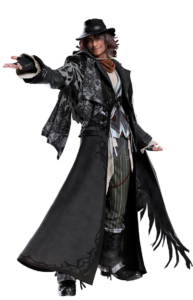
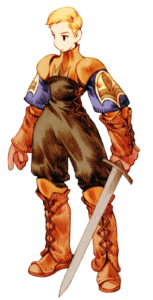
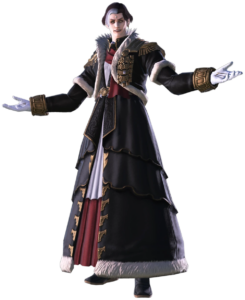
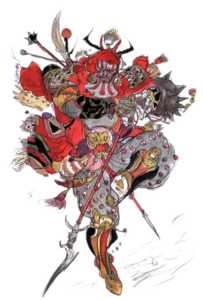
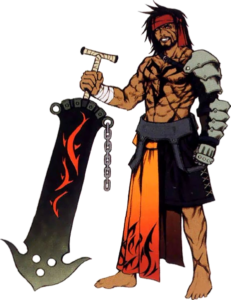
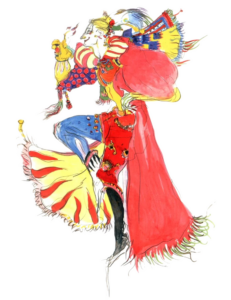
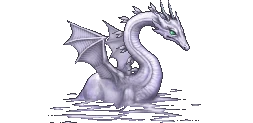
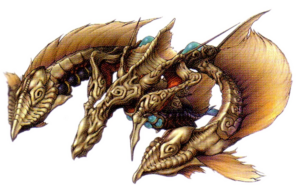
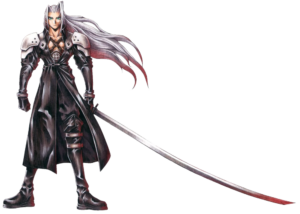
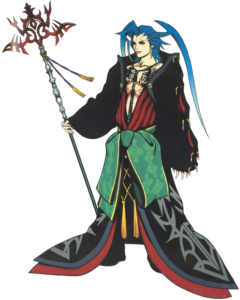
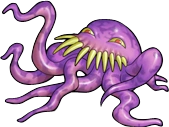
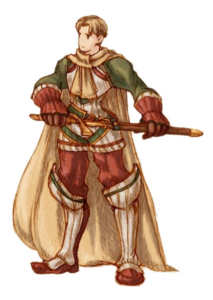
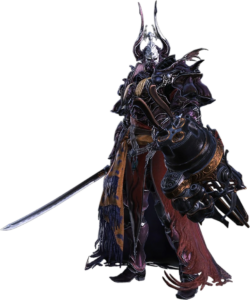

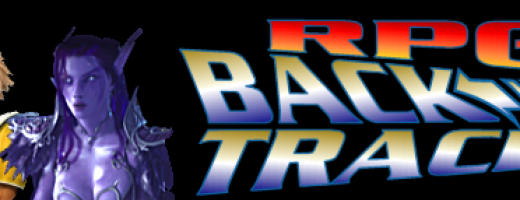




Recent Comments